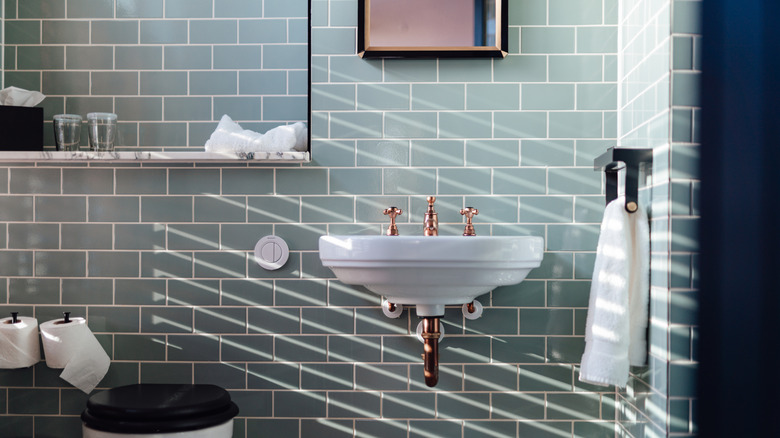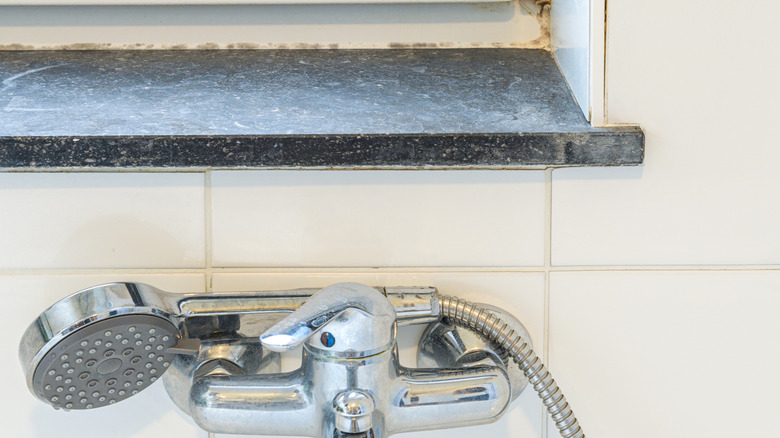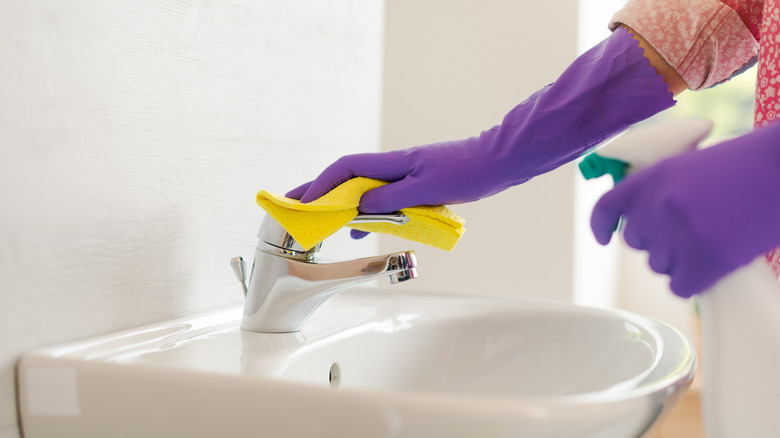Why Your Bathroom Sink Stinks (And How To Fix It)
You already know how important it is to regularly clean your bathroom. However, you may notice that your bathroom sink stinks despite your best efforts. This is because mold and mildew grow best in hot, humid environments, so it's a perfect storm when you have consistently running hot water, an enclosed space without proper ventilation, and growing mediums like soap scum caked onto the bathtub or sink. A moldy environment can cause allergic reactions, irritation of the skin, or other long-term health effects (especially for people with asthma and other respiratory concerns), so keeping things clean is imperative. However, you might notice a mildewy scent lingering around your sink even after you scrub the basin, the drainage hole, and any pipes in the cabinet beneath. To fix this, you may have forgotten one key part of the sink: the overflow hole. So, it's important to thoroughly clean it.
Mold is a fungus that can grow in any number of unexpected places; you might even have to try and save your bathroom towels if mold starts growing on them. But it makes perfect sense to imagine that mold or mildew might be hiding in a sink's overflow drain, accessed via that small hole with a visibly unfinished interior nearest to you when you're bending over the rim to spit out a mouthful of toothpaste. It's a dark, contained space that's designed to accommodate the full flowrate of your faucet should the primary drain be blocked up, ideally preventing a complete flood of water onto your bathroom floor. Mold can start to grow within 24 to 48 hours of water exposure on any damp surface, so it's imperative that you get to cleaning if you can smell it from the sink's overflow.
What you can do to address the mildew smell in your sink's overflow drain
There are plenty of notoriously hard spots to clean in your bathroom that shouldn't be overlooked, from that bend behind the toilet to the upper corners of your shower. A sink's overflow drain is one especially tricky space to consider given it has such a small access hole set at an awkward angle. While chemical biocides are not recommended for regular, routine mold cleanings given they can release toxic fumes without always sterilizing the entire growth, there are other solutions you can pour down that drain to address the mold problem.
First things first, you should pick up a heat-resistant funnel — one that's made of metal, silicone, or other similar materials. Use this funnel to pour 1 cup of baking soda, and then 1 cup of vinegar into the drain, which should cause the cleaning foam to expand around the enclosed space like an old baking soda volcano science experiment. After about 15 to 20 minutes, flush out the drain by pouring in boiling water, and repeat that process until you're satisfied with the mildewy smell having passed. Physical scrubbing is often important to make sure you get all of the built-up mold before letting that space dry out, so you can pick up some pipe cleaners or a sink-cleaning brush to try and get at whatever gunk is built up inside the overflow hole.
Ways to try and prevent smelly mildew from growing in your sink
It's hard to completely get rid of a mold infestation, as background spores will often remain after cleaning — and even dead mold can cause allergic reactions if the problem isn't completely removed. Since it's nigh-impossible to get a good look inside of your sink's drainage pipe and see whether you've properly cleaned it out, your best bet is going to be following tips to prevent mold from entering in the first place. As mentioned, you should try to keep exhaust fans running whenever you shower, and overall try to keep indoor humidity below 60%. A leaky sink could also lead to mold growth via constant water exposure, so fix any pipes or faucets as soon as you notice a problem.
It's also notable that mildew isn't the only smell that might be coming from your sink. If you have an unexpected sewage backup, the sink is one key place it might flow back up — though it could also hit your shower, your toilet, your washing machine, or any number of appliances connected to pipes. In this case, you might just need to seal any drainage holes with a plug to prevent them from overflowing into your bathroom, and then call a professional to fix the home's sewage system. Once the sewage problem is addressed, you should still be able to pour cleaning products down the overflow hole to clean out any lingering smells so your bathroom feels as good as new.


